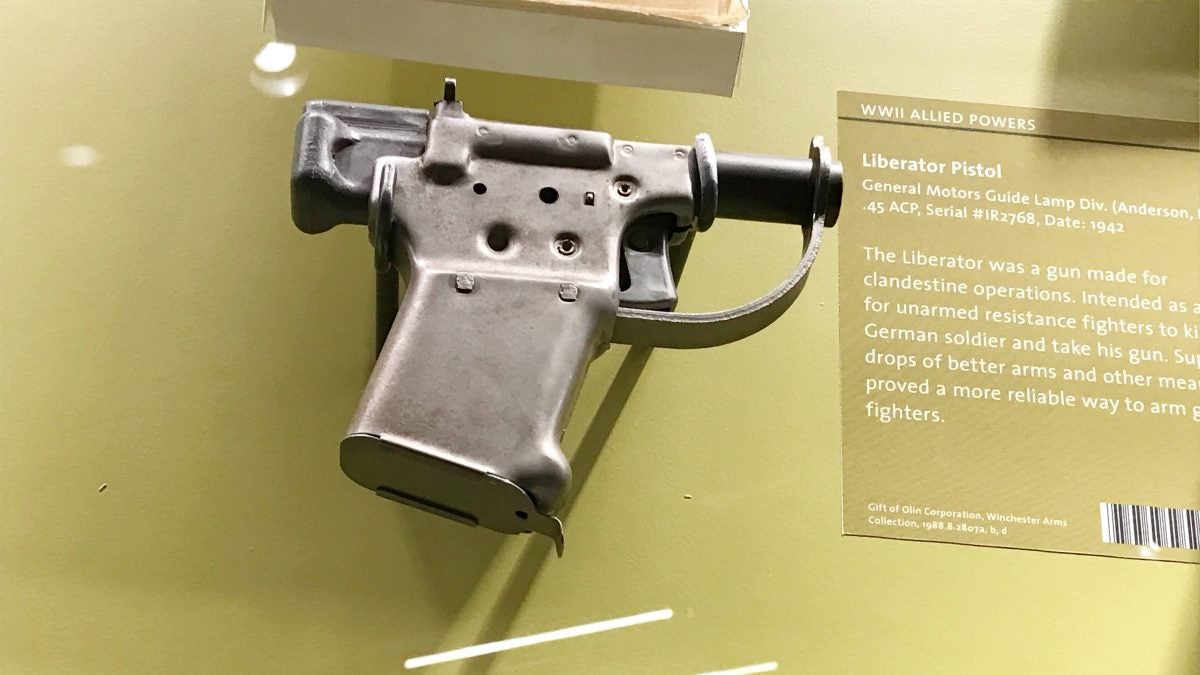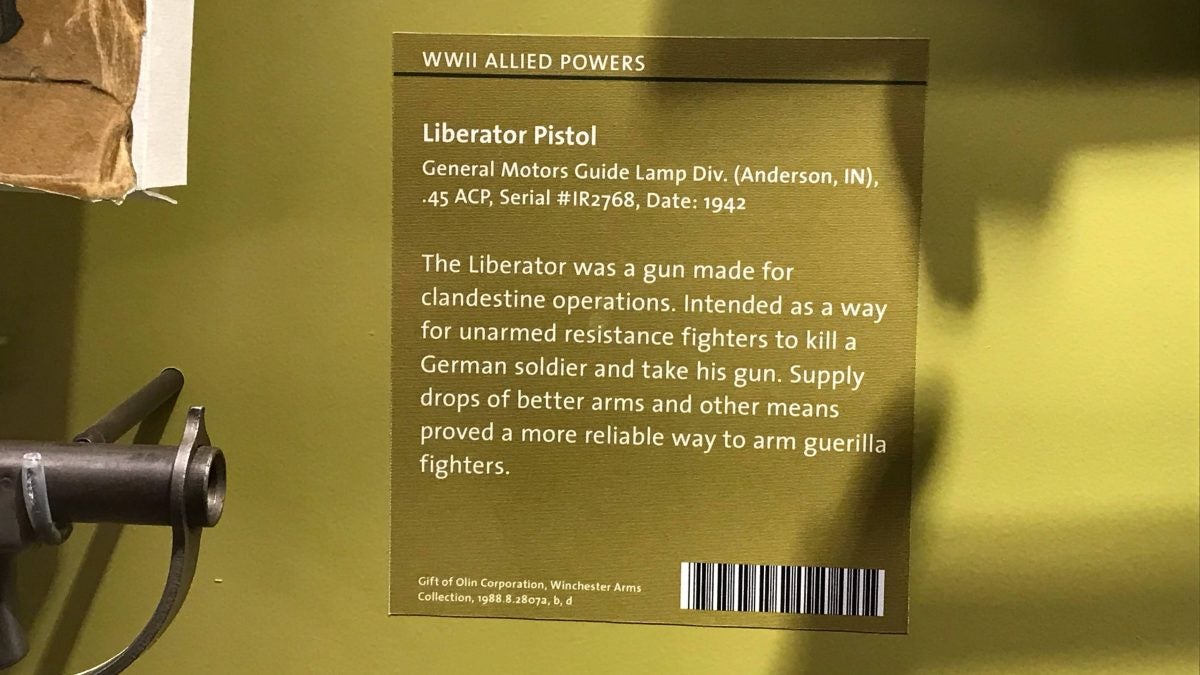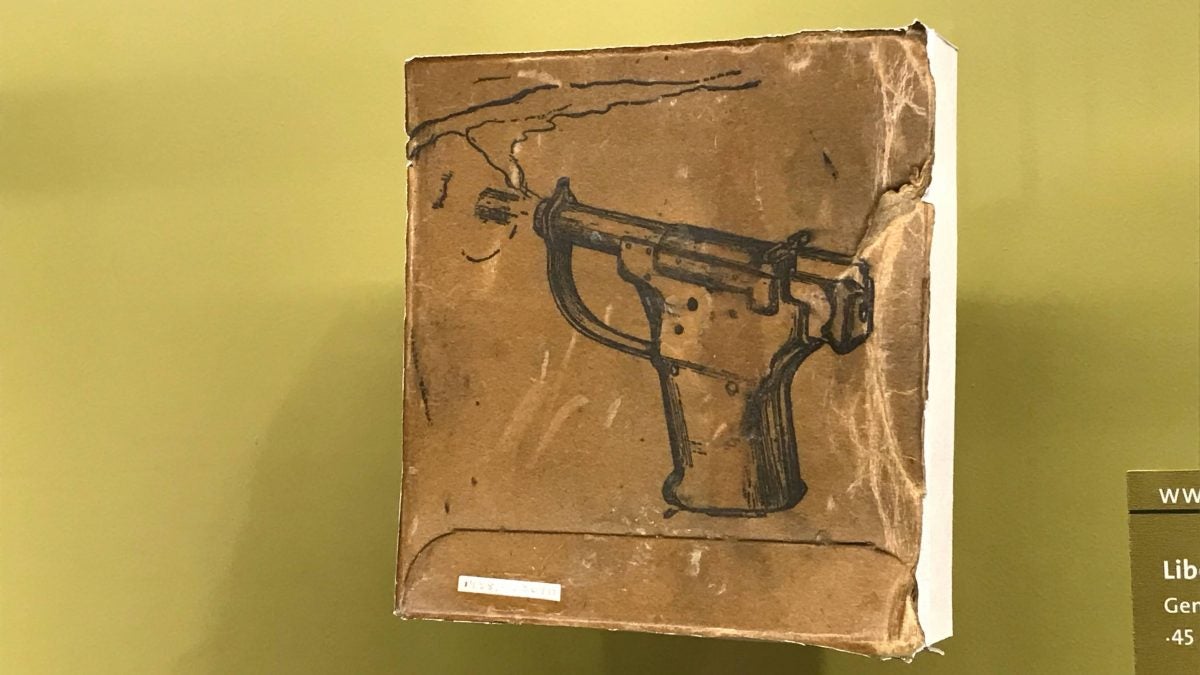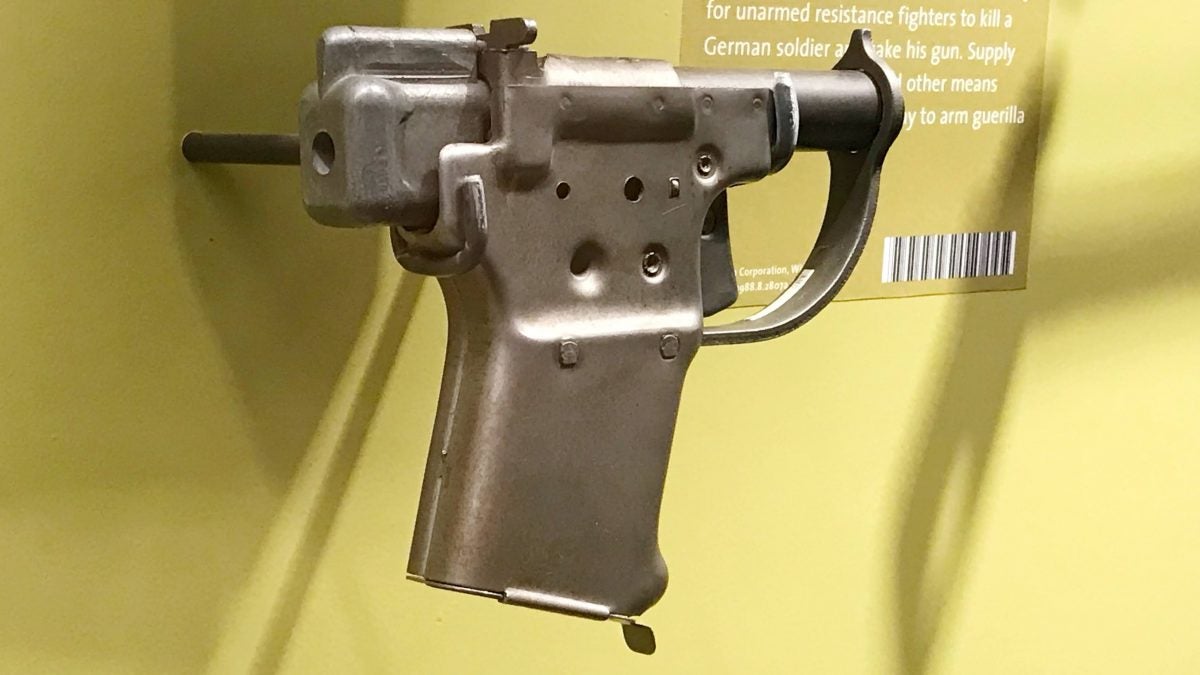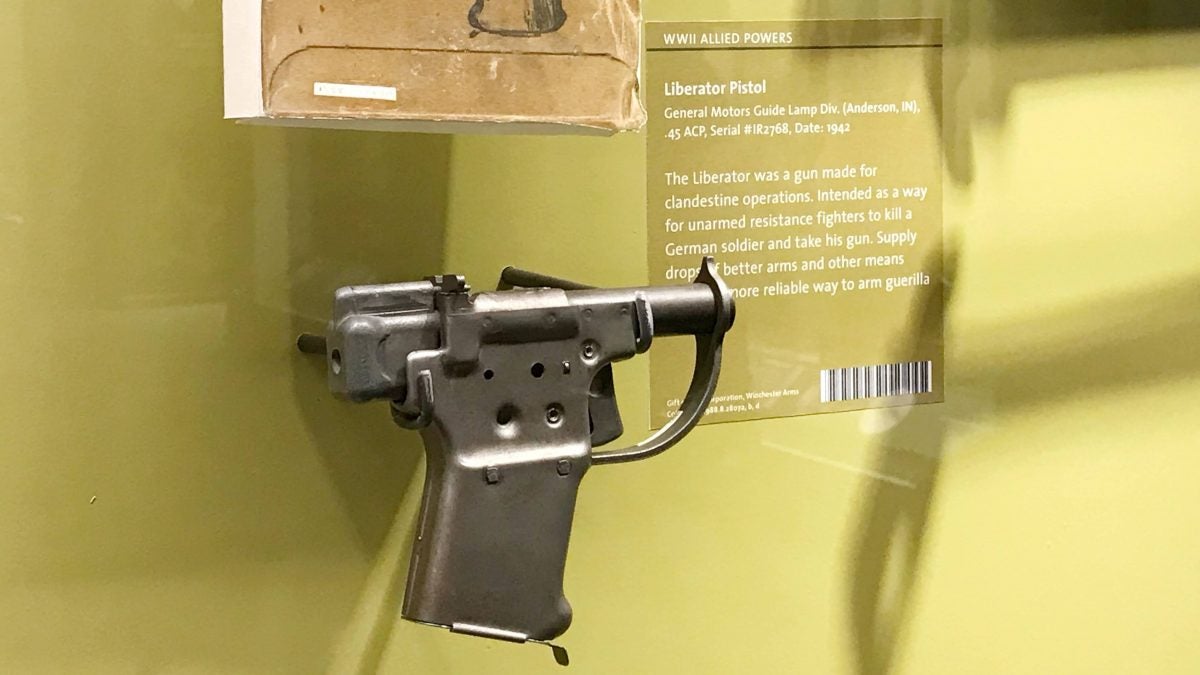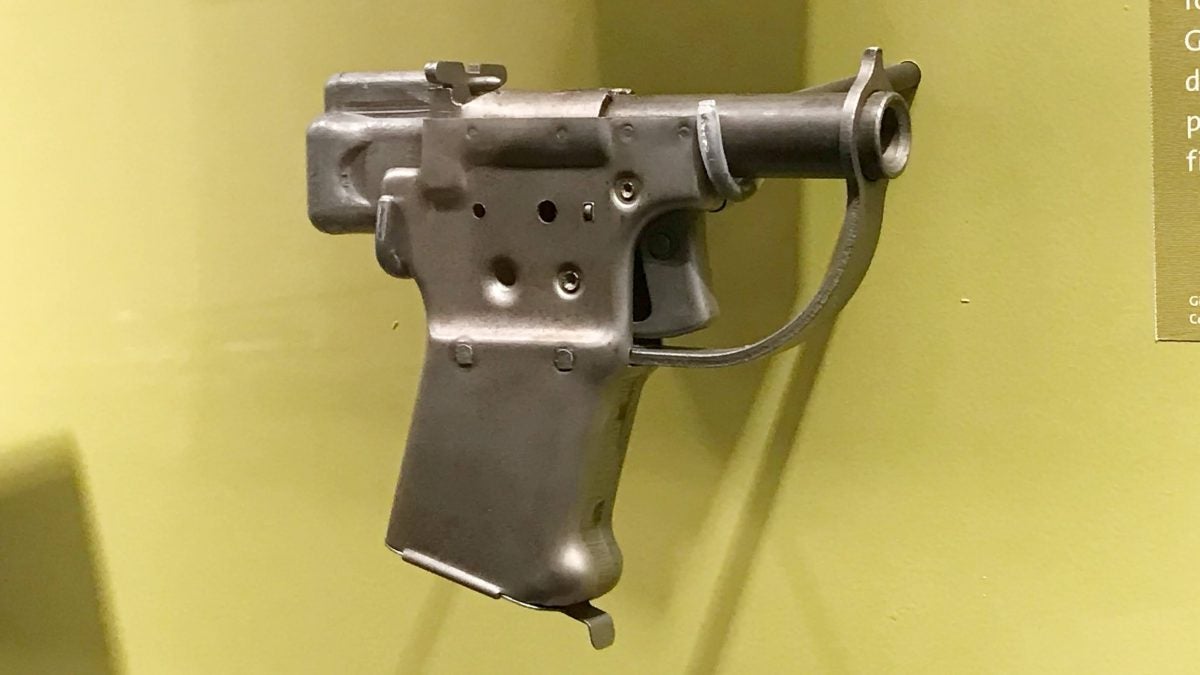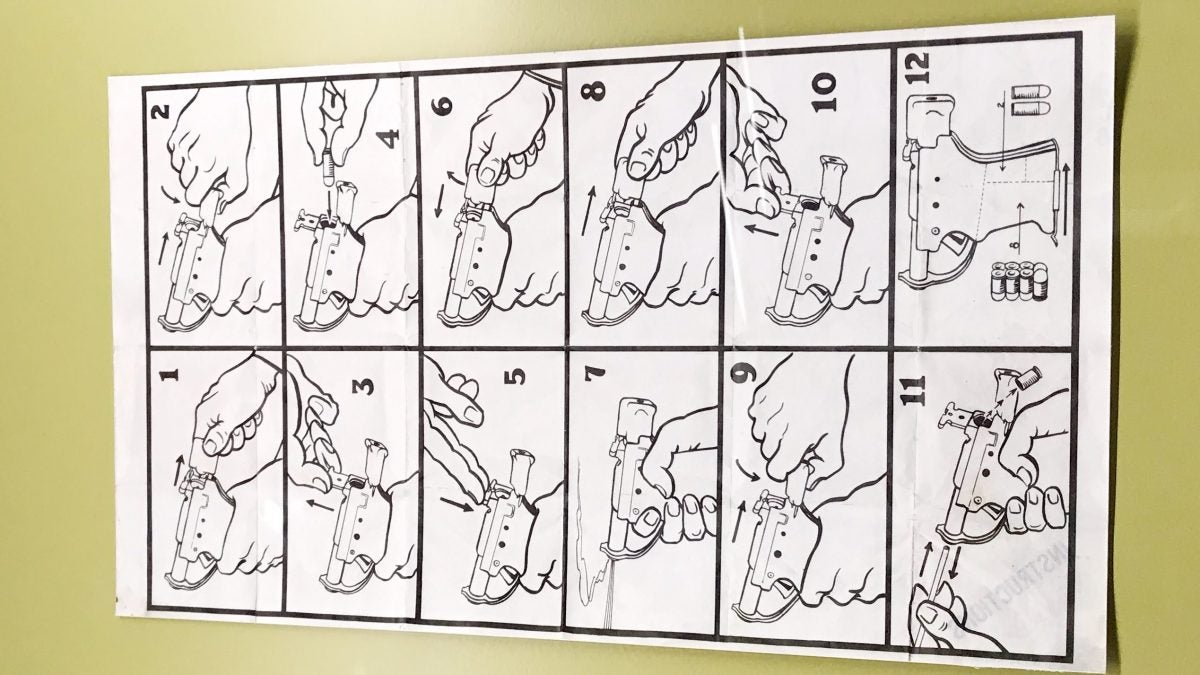Curious Relics #021: From the Cody Firearms Museum – Liberator Pistol
Sam.S 09.08.21
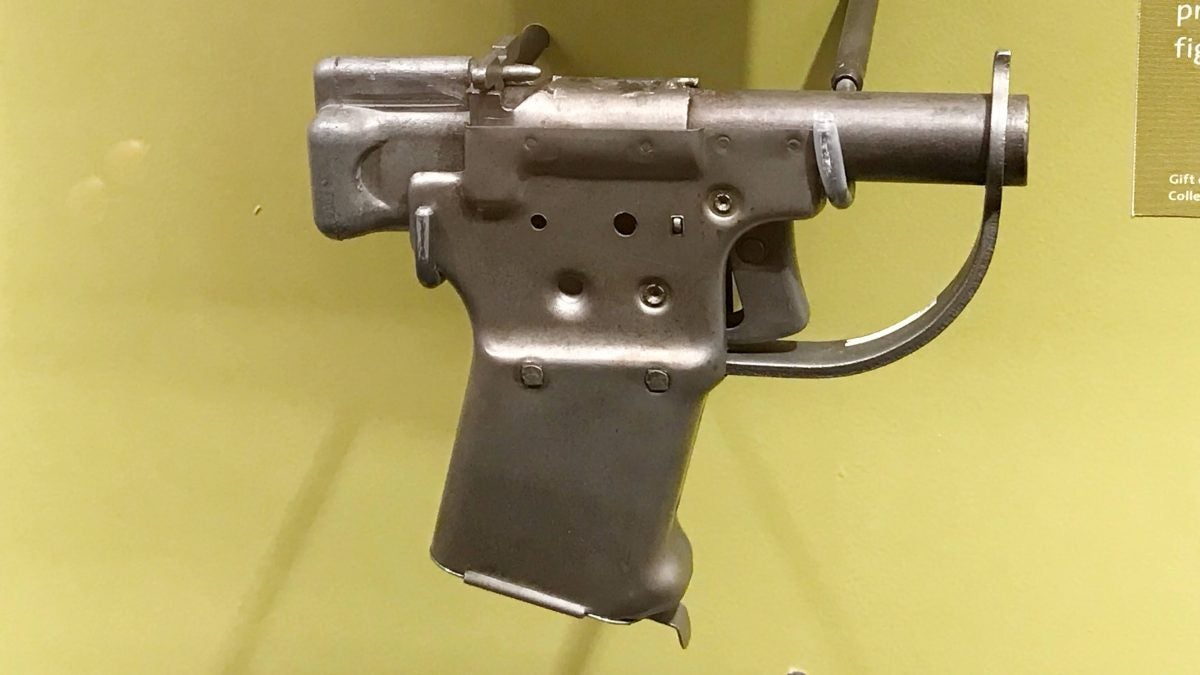
Welcome, if you are a newcomer to this fun bi-weekly segment of AllOutdoor.com! The last time around I covered the lovely and beautiful Colt Single-Action Frontier Scout. I went over the history, variations, dating, specifications, aftermarket parts, and some range time. Today, thanks to the Cody Firearms Museum, we are leaping into a World War Two invention of rebellion and deception, the Liberator Pistol. Let’s dive right into the rabbit hole!
Welcome to our recurring series of “Curious Relics.” Here, we want to share all of our experiences, knowledge, misadventures, and passion for older firearms that one might categorize as a Curio & Relic – any firearm that is at least 50 years old according to the ATF. Hopefully along the way you can garner a greater appreciation for older firearms like we do, and simultaneously you can teach us things as well through sharing your own expertise and thoughts in the Comments. Understanding the firearms of old, their importance, and their development which lead to many of the arms we now cherish today is incredibly fascinating and we hope you enjoy what we have to share, too!
History Abridged: The Liberator Pistol
The FP45 or better known as the Liberator Pistol was a result of the formation of the U.S. Joint Psychological Warfare Committee. Psychological warfare is often left out of history books and discussions mainly because of its initial secrecy that sort of shrouds it on a tightrope between fact and fiction. Merriam-Webster defines psychological warfare as things that are done to make someone (such as an enemy or opponent) become less confident or to feel hopeless, afraid, etc. The original concept for the Liberator Pistol was to be dropped into occupied zones in hopes of resistance fighters obtaining and using them to aid in the overthrow of the occupation. Real-life panned out differently, but these little guns did in fact bother Axis powers in the intended way although to a lesser degree.
The initial design was thanks to George Hyde of the Hyde submachinegun. In hopes to maintain the project’s secrecy the job was given to General Motors’ Guide Lamp division and designated the FP45 which stood for Flare Pistol (sometimes Projector) 45 Caliber. This was an attempt to further keep the intent of the project away from spies and informants. This “Flare Pistol” had no gun parts labeled on its schematics and instead mentioned parts like the tube (barrel) or the yoke (trigger).
The production run ran from June 1942 to August 1942. One million Liberator pistols were manufactured and at a cost of $2.10 each. It has been said that these pistols were manufactured faster than it takes for you to reload the pistol itself. These guns were mainly made from sheet metal and riveted together. The barrel was a smooth bore and the cocking piece was made from a cast alloy like pot metal. During testing, it was determined that these guns began to warp or fall apart and overall become dangerous to the shooter after about 50 rounds.
Despite the monumental number made and in a short amount of time the ideal intent for the Liberator Pistol never came to pass. Around 500,000 were shipped over to Britain and were expected to be dropped all over occupied France. This idea was shot down unfortunately given the number of handguns able to be on a plane and the distance it would have to travel. Britain’s planes were too valuable to risk dropping little cargo and wasting time and resources to do it. It is said that they never saw France, but I have read some sources that mention German police forces finding them or just fearing their existence.
Despite these guns not being dropped into occupied zones some were sold to Greece and sent to places like China and the Philippines. After the war, the British would end up either dumping their surplus Liberator Pistols into the ocean or scalping them entirely. The US would eventually take their remaining Liberator Pistols out of the Frankford Arsenal and destroy them.
Today surviving examples fetch quite a bit of money. The Liberator Pistol lives shrouded in hearsay and falsehoods that it was the terror of Axis occupying forces. In reality, it was a neat concept for psychological warfare and a shot in the dark that just did not land. Vintage Ordnance currently manufactures reproduction Liberator Pistols and the general concept of the gun itself inspired one of the first 3D printed handguns.
Variations: Liberator Pistol
As far as I could tell from my research there was not much in terms of developmental changes to the FP45. This is mainly due to it basically being a quick short run and an overall failure. One thing I did find however is that early examples of the Liberator Pistol did not have the guide rod above the firing pin. This was almost certainly added to aid in reliability.
Current Production: The Liberator Pistol
Nowadays you can still get yourself a Liberator Pistol. I find this super reassuring since originals go for a ton of money and are fairly uncommon since they were dropped around the world and surpluses destroyed after the end of the war. Vintage Ordnance is the company responsible for keeping a faithful reproduction and representation of the Liberator Pistol alive. The main difference is that their barrels are rifled in order to comply with federal laws as well as to prevent misidentification as an original. Their cocking pieces are also made out of a stronger alloy than the original making them safer.
From what I’ve read on the internet Vintage Ordnance does not recommend shooting their Liberator Pistol in excess even though it is made from modern materials. That being said they sell a few different display options and versions of the pistol in case you’d like to own a copy of a piece of history and proudly show it off. Aside from that they also sell well-made copies of the same contents that the pistol would land with. This included the pistol, a cardboard box depicting the item inside, a stick for ejection, and a picture-style user manual. The original boxes would also have a small box with ten 45 ACP cartridges.
Specifications: The Liberator Pistol
The FP45 Liberator Pistol was put into a cardboard box that depicted the pistol on the outside. Inside the box also typically included a wood dowel for helping with ejection, a well-illustrated manual on the operation of the pistol, and at least ten rounds of ammunition. The pistol had a smooth bore so it was intended for very close quarters and the bullets would begin to tumble fairly quickly.
- Years Produced: From June 1942 – August 1942 (Reproductions available from Vintage Ordnance)
- In Service: 1942 to 1945
- Cost of Production: $2.10 ($35.29 in 2021)
- Manufacturing Numbers: Only around 575,000 are said to be shipped out, but 1,000,00 were manufactured.
- Chambering: .45 ACP
- Barrel: Smooth Bore (Reproductions are rifled)
- Barrel Length: 4 Inches
- Overall Length: 5.55 inches
- Weight: Roughly 1 Lb
- Action: Single-Action/Single Shot
- Capacity: One
- Ammunition Reserve: 10 Rounds in Grip Reserve
- Front Sight: Fixed Extension of Trigger Guard
- Rear Sight: Notch in Rear Sliding Plate
- Grip: Stamped Steel
Operation: The Liberator Pistol
Since I myself do not own or have access to shoot a Liberator Pistol I decided to change the typical range time slot to an operational slot. The manual of arms for the Liberator Pistol is very simple. So simple, in fact, that the inclusion of the cartoon-looking manual in the box says it all in just 11 steps.
- Pull the cocking piece to half-cock
- Rotate the cocking piece 90 degrees
- Pull straight up on the rear plate that also acts as a rear sight
- Insert one 45 ACP cartridge into the chamber
- Push the rear plate back down
- Rotate the cocking piece 90 degrees back in the direction you started with.
- Make sure the cocking piece is cocked all the way back
- Now the trigger may be pulled (will set off the cartridge)
- Pull the cocking piece to half-cock and rotate 90 degrees
- Slide rear plate up
- Use included dowel to eject the spent cartridge
Final Thoughts: The Liberator Pistol
I myself am guilty of thinking this little liberator was dropped into occupied countries in World War Two. I am glad that I had a chance to enrich my consciousness as well as attempt to be informative. A giant thank you goes out to the Cody Firearms Museum and the staff for being so kind and hospitable. Their collection of firearms is fantastic and their goal to inform and preserve is so righteous! Check them out.
In closing, I hope our Curious Relics segment informed as well as entertained. This all was written in hopes of continued firearm appreciation and preservation. We did not just realize how guns were supposed to look and function. It was a long and tedious process that has shaped the world we live in. So, I put it to you! Is there a firearm out there that you feel does not get much notoriety? What should our next Curious Relics topic cover? As always, let us know all of your thoughts in the Comments below! We always appreciate your feedback.
